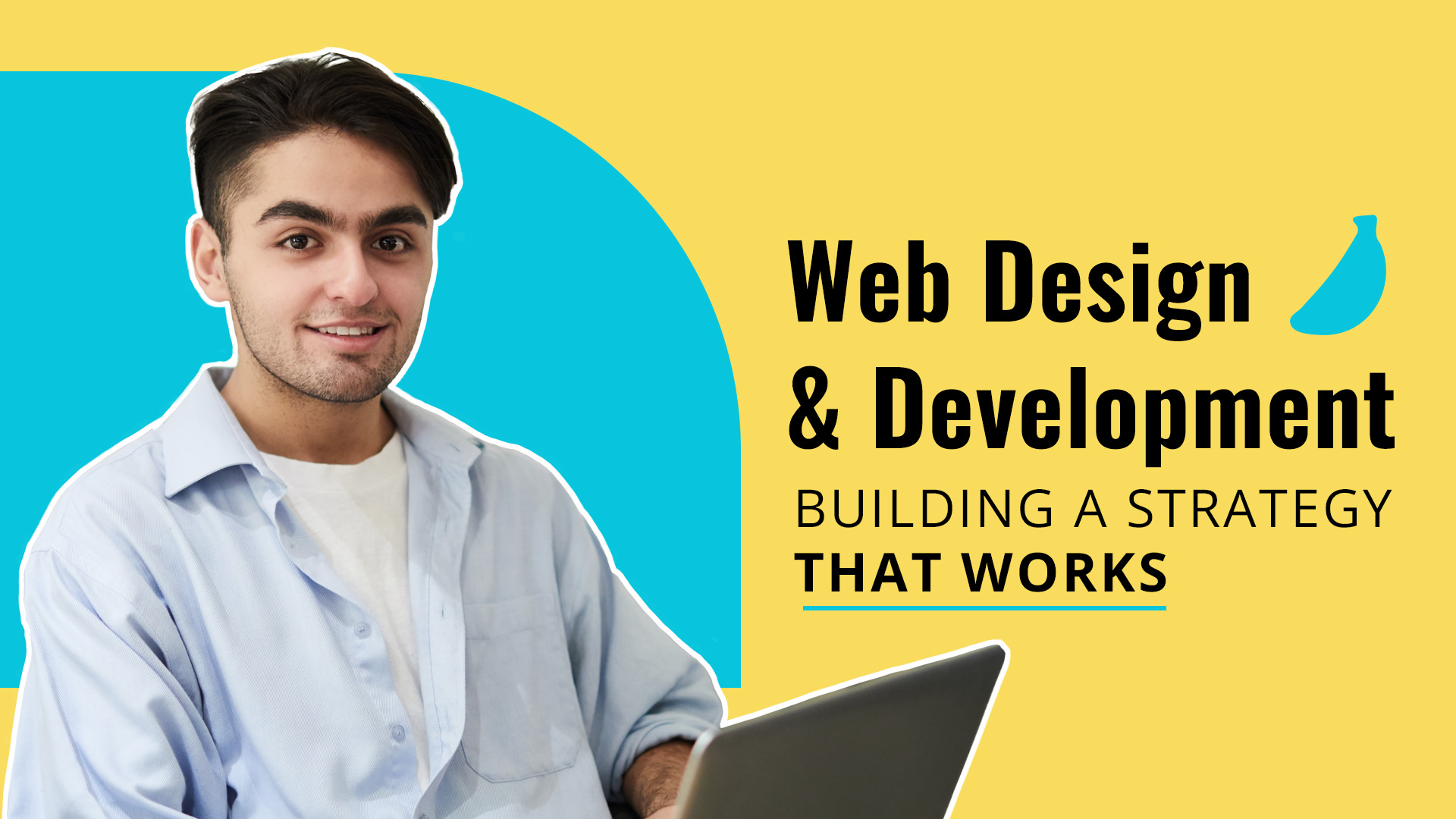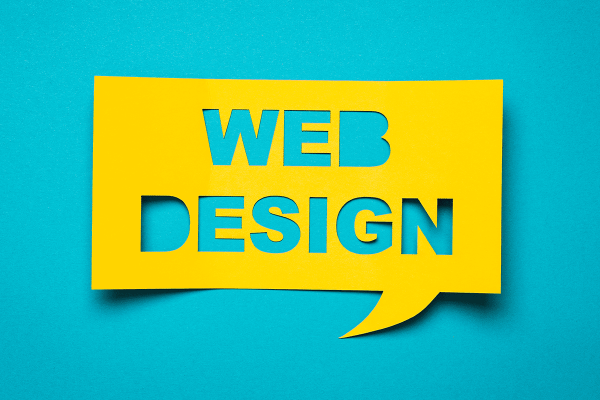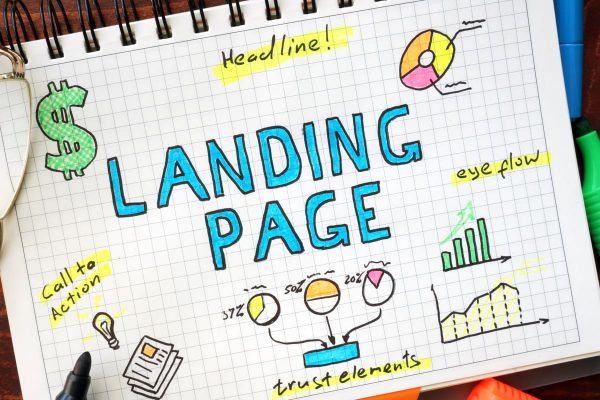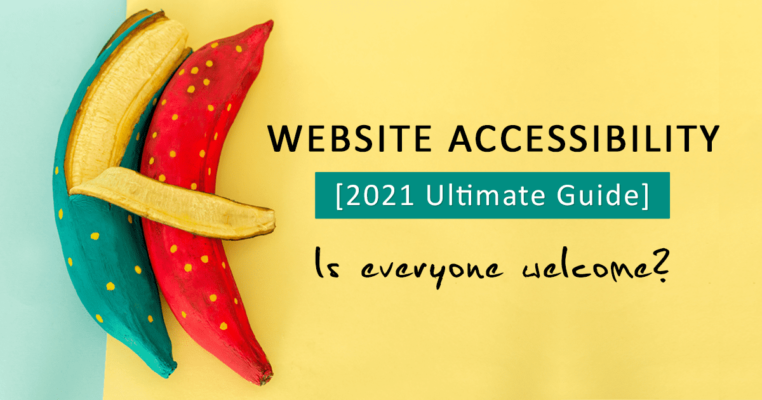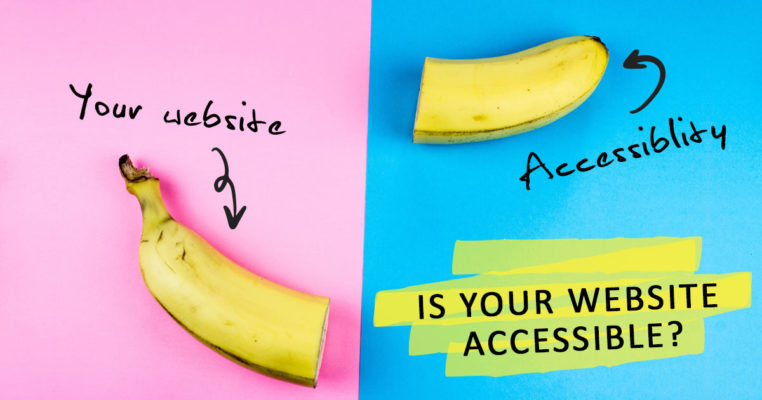Your website is the face of your business. Therefore, it is vital to design a website that looks professional, conveys your brand message, and meets the needs of your target audience. To do so, you need to dive deep into web design and development.
Building a website is a huge investment, so it’s crucial to make sure that you’re getting the most out of it. This article will discuss how to build a website that works and give you some tips on tackling web design and development.
What is web design and development?
Web design and development is the process of designing and creating a website. A website can be anything from a simple online portfolio to an elaborate business page. A web designer will typically start by gathering information about the client’s business, goals, and target audience. After this research, the designer will create a plan for a website that meets the client’s needs.
Front-end web developers, stack developers, and game developers, etc., may all participate in the process. This can involve creative ideas, layout concepts, colour schemes, and more. Once the design is complete, a web developer will create the code for the website using HTML5 or CSS3. Finally, any necessary images or videos can be added to complete the project.
What are the benefits of web design and development?
Web design and development offer a number of benefits that can be valuable to businesses of all sizes. These benefits include:
1. Increased Traffic
Web design and development can help boost traffic to a business website by creating more attractive and user-friendly pages. In addition, effective web design and development can help attract new customers by improving a business’s online visibility..
2. Increased Brand Awareness
Effective web design and development can help increase brand awareness for businesses of all sizes. By creating a well-designed and easy to navigate site, companies can attract new customers and increase their visibility in the marketplace.
3. Improved Conversion Rates
Web design and development can help improve conversion rates by creating sites that are easy to use and navigate. It can also help increase the number of leads and sales generated by a business website.
What are some standard web design and development challenges?
One of the most common challenges businesses face when it comes to web design and development is finding a designer who understands their specific needs. Additionally, businesses often have difficulty finding a developer who can create a site that meets their specific requirements.
Common challenges faced by businesses when it comes to web design and development include:
1. Finding the Right Designer: Many businesses struggle to find designers who understand their specific needs and can create sites that look great.
2. Finding the Right Developer: Many businesses find it challenging to source developers who can create sites that meet their specific requirements and deadlines, as well as understand the company’s expectations.
3. Ensuring that the site is easy to use and navigate: Effective web design and development can help increase the number of leads and sales generated by a business website. In addition, effective web design and development should make it easy for customers to find what they are looking for on the site.
4. Making sure the site is mobile-friendly: As businesses increasingly rely on mobile devices to conduct business, their websites must be mobile-friendly. This means that the site looks and works well on various devices, including smartphones and tablets.
5. Making sure the site is search engine friendly: of the most critical factors in web design and development, being search engine friendly means that the site appears high up on results pages when people type in specific keywords.
6. Making sure the site is visually appealing: A well-designed website can help a business stand out from its competitors and help customers connect with the company in a more personal way.
7. Ensuring that the site is compliant with web standards: Many businesses want their websites to look professional and stand out from the competition, but they also must comply with web standards. This means that the site looks good on various browsers and conforms to current web design trends.
Creating a visually appealing, search engine- and mobile-friendly, easy to use website that is compliant with web standards can be challenging. However, with the help of a professional web design and development company, these goals can be easily achieved.
What are the stages of web design and development?
There are three main stages in web design and development:
Planning
In the planning stage, graphic and web designers will come up with a plan for the website, including what it will look like and how it will function. They’ll also decide on the aspect of design and layout of the pages, as well as the content.
What should be included in the planning stage of web design and development?
1. Define the business’s objectives
The business’ objectives should be clearly defined before starting any web design or development project. Furthermore, the business should understand what needs aren’t being met and what goals the website should serve. The next step is to determine what needs to be addressed on the site and how to go about it.
2. Identify who the target audience is
To design and develop a branding strategy that works, it is vital to identify the target audience. This can be done by understanding their needs and wants, as well as their current web usage habits. Once the target audience has been identified, it is essential to create content and designs that are relevant to them.
3. Research the competition for web design and development
When starting a new web design or development project, it is also crucial to research and compare yourself to the competition. This will give you an idea of what is popular in the industry and help you create a strategy that will work best for your business.
4. Determine the company’s budget for web design and development
You should have an accurate understanding of the company’s budget too. This will help you determine the feasibility of specific design and development options. Additionally, it can help you avoid overspending on unnecessary features or services. By consulting with the company’s management team, you can develop a realistic plan that meets their needs while staying within your budget.
5. Determine the timeline for completion
If we talk about timelines for web design and development, there is no single correct answer. Every project is different, and therefore the timeline for completion will vary as well. However, some general guidelines can be followed to help ensure a successful outcome.
- First and foremost, it is essential to have a clear idea of what you want your website to look like and function like.
- Once this has been established, it is then crucial to create a detailed plan of how you plan on achieving those goals.
- Once the plan is complete, you should track progress and make necessary changes as required to stay on schedule.
- Finally, once the website is completed, it’s essential to evaluate how things went and make any necessary tweaks or adjustments
6. Choose a web design or development platform
Choosing a design or development platform can be difficult. There are many platforms out there, and each has its own strengths and weaknesses. Ultimately, the best platform for your project depends on your specific needs. If you’re not sure which one you should go with, ask yourself if you need a platform that:
- Allows you to create custom websites quickly and easily
- Provide flexibility in terms of design options and layout
- Is easy to use and navigate
- Supports various programming languages
7. Create a strategy for web design and development
Creating a strategy is vital for any web design or development project. Doing so helps ensure that the content on your website is compelling, engaging, and meets your target audience’s needs. A good content strategy includes:
- Defining your target audience: Knowing who you’re trying to reach with your website content will help you determine what types of information and topics are most important to include.
- Determining the purpose of each piece of content: Is it designed to educate, entertain, or sell? Once you know the aim of each piece of content, you can determine how important it is and which visual elements should be prioritized.
Design
Once the plan is finalized, visual designers will start creating the actual pages and graphics. Finally, they’ll work with developers to create a functional website that looks great.
What should be included in the design stage of web design and development?
1. Research and plan the layout of the website
When planning the layout of a website, it is essential to do your research. You want to make sure that the layout will be user-friendly and effective for your target audience. Additionally, you should consider how you will market your website. Once you have a general idea of what you want your website to look like, it is crucial to create a strategy. This includes outlining what content you plan on including, as well as figuring out how best to display it.
2. Choose and create appropriate web design software and development tools
Many design tools can be used in web design and development, but it is important to choose the appropriate ones for the task at hand. For example, if you are creating a website from scratch, you will likely need a web editor like Dreamweaver or Photoshop. However, if you are updating an existing website, you may only need to use browser extensions like Google Chrome’s Developer Tools or Firefox’s Firebug.
It is also essential to consider what kind of technology your website will be built on. For example, if your site will be hosted on a server then you must consider which software package is best suited for that web host.
3. Create a wireframe or prototype of the website
A wireframe is a visual representation of the website used to help with the graphic design process. It just helps to determine how the website will look and function and can be created in a variety of different formats. A prototype is a simplified version of a wireframe used for testing purposes.
4. Test and revise the design until it is perfect
Designing a website can be a challenging task. It is essential to test and revise an interactive design until it is perfect to ensure the user interface is great and provides satisfactory user experiences. Many different factors can affect the UX including the layout, graphics, and content.
It is essential to test and revise the design until it meets all of your expectations to ensure a positive user experience. This means creating a website that is easy to navigate and use, regardless of device or browser. By focusing on the user experience, you can create a website that users will love!
Development
After the product design process is complete, developers will code the website to work correctly within the web design and development phase.
What steps should be included in the Development stage of web design?
1. Define the project scope
It is important to have a clear understanding of the project scope. This will help ensure that the project is completed on time and within budget. The following are some questions to ask when developing a project scope:
- What are the main goals of the website?
- What information will be included on the website?
- What type of design, visual aesthetics, and layout are you looking for?
- How many pages will the website have?
- Will additional features or functionality be required?
2. Create a brief for web design and development
Creating a design brief is an important step in any web development project. It can help clarify the project’s goals and ensure that all stakeholders are on the same page. Well-written design concepts can also help reduce confusion and ensure that the final product meets customer expectations.
3. Choose a web design and development platform
Choosing a web development platform can be overwhelming. There are so many to pick from that it can be hard to know which one is right for you. Here are some tips to help you choose the right platform:
- Do your research: Read reviews and compare features of different platforms before making a decision.
- Consider your needs: Which features are important to you and which tools do you need most?
- Think about your budget again: overspend on a platform just because it’s expensive; there may be cheaper options, but they tend to offer fewer features than more costly platforms.
- Be realistic about what you can accomplish with a given platformL Don’t expect too much from a free platform, for example.
- Ask yourself which features are important to you and which you can live without: For example, some users might not need a CMS (content management system) while others will require one to create custom websites.
4. Choose a web design toolset
Yes, we know. There are so many different programs and options to choose from, and it can be hard to know which one is best for your needs. You should consider a few things when choosing a web design toolset.
First, we recommend using an online tool like Canva or Adobe Photoshop if you’re just starting out. These programs are free to use and they offer easy access to a wide range of templates and designs. If you’re looking to get more advanced, we recommend investing in a software program like Adobe Dreamweaver or Frontpage. Or, even better – use our services!
5. Choose a web design and development team
Choosing a web development team is a complex process that requires careful consideration. They must have, for example, some basic skills like marketing, development, communication, programming, and technical skills. Factors to consider include the team’s experience, skill set, and track record. Additionally, it is crucial to view the team’s availability and willingness to work together.
6. Choose a web hosting provider
A proper web hosting provider is essential. There are some factors to consider, such as price, features, and customer service. Here are some tips to help you choose the right web host:
- Do your research: making any decisions, it’s essential to research and find a provider that meets your specific needs. Read reviews and compare prices.
- Consider your budget once more: You should not overspend on your hosting plan because you believe it will save you money. Make sure you understand what features are included and how much they will cost you per month.
- Look for a provider with a good customer service track record.
Conclusion
Building a website may be a daunting task, but it can be made easy with the right strategy. By following these simple steps, you can create a website that works well for your business.
Contact us if you need any help with your web design and development. At SociallyInfused Media, we are experts in the field and can help you create a strategy that works for your business.
